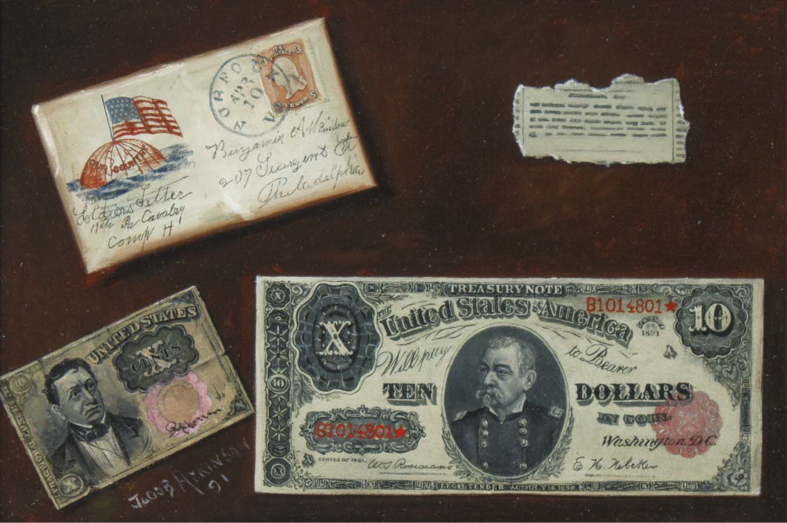Ten Dollar Bill and a Soldier’s Letter

A postal worker from Philadelphia, Jacob Atkinson (1864 –1938) specialized in trompe l’oeil still lifes, a genre popular among American artists in the 19th century. Only two signed paintings by Atkinson are known to exist: at the Indianapolis Museum of Art, Souvenir of the Columbian Exposition includes depictions of correspondence and currency that reference the Columbian Exposition in Chicago in 1893. His second known work, Ten Dollar Bill and a Soldier’s Letter was recently acquired by the Davis Museum.
Ten Dollar Bill and a Soldier’s Letter is an excellent example of currency trompe l’oeil, a type of still life popularized in the late 19th century in Philadelphia by artists such as William Harnett (1848–1892) and John Peto (1854–1907). The Davis canvas is dominated by a ten-dollar treasury note in the lower right corner, and bordered by a ten-cent note, a letter, and a newspaper clipping. The ten-dollar bill is marked from the 1891 series, but the ten-cent bill is earlier, an artifact from the Civil War. The letter is also a signifier of the Civil War, as it is postmarked April 10th from Norfolk, Virginia and labeled “Soldier’s Letter/11th Pa Calvary/Comp H”, referring to the 11th Pennsylvania Calvary who were present on April 9th at the surrender of General Lee in Appomattox, Virginia. While the painting is dated twenty-six years after the end of the war, it is representative of a larger artistic trend of trompe l’oeil allusions to the war that began circa 1890.